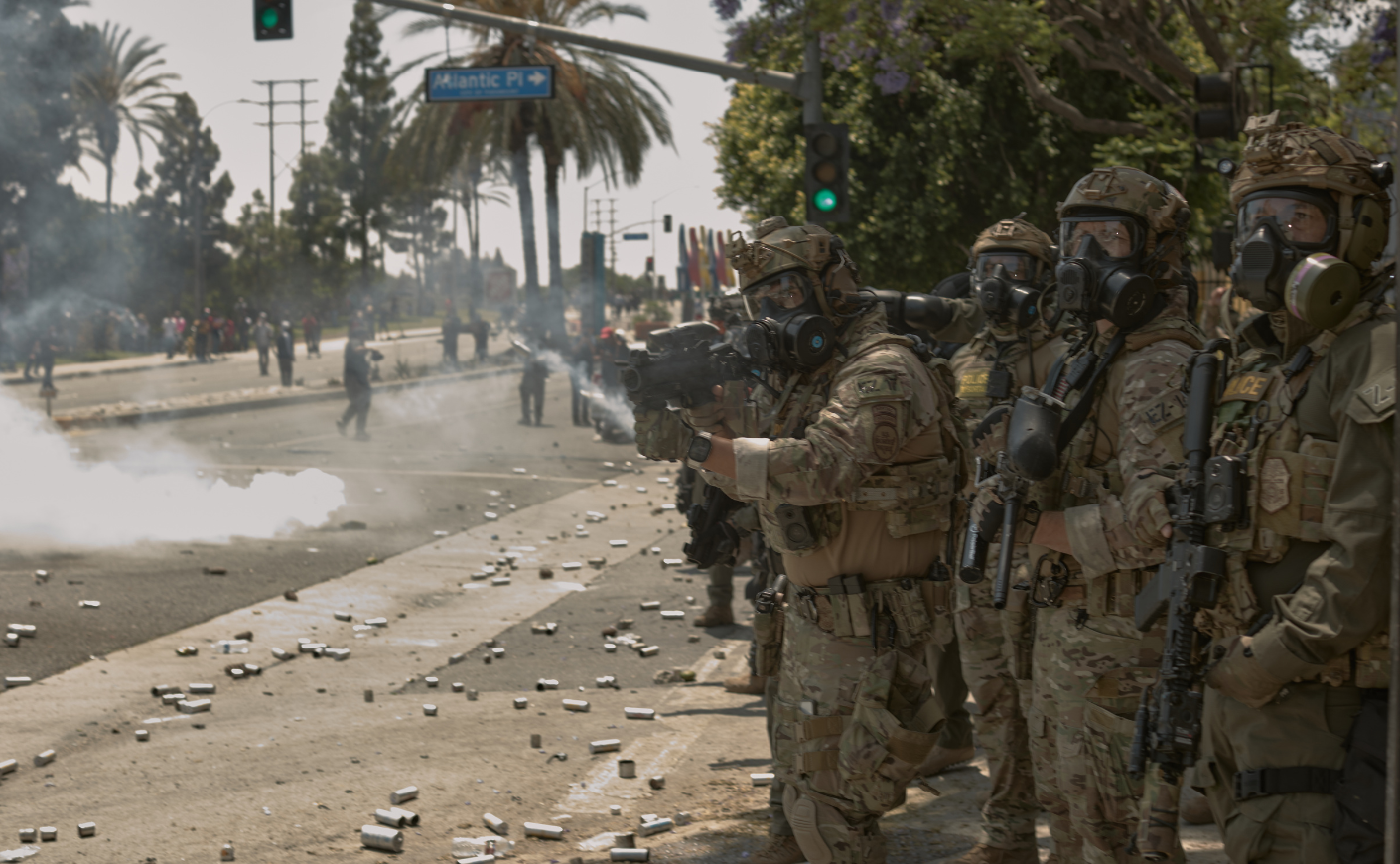Los Angeles has emerged as the center of escalating tensions after federal immigration agents carried out coordinated raids throughout the city, triggering widespread protests.
The demonstrations expanded beyond downtown, reaching cities like Paramount and Compton, where tensions escalated and clashes broke out between demonstrators and law enforcement. In response, the federal government took the extraordinary step of deploying thousands of California National Guard troops.
“There are a lot of undocumented people who are a part of the fabric of the community here,” local NBC reporter Jacob Soboroff told Katie Couric on Sunday during an IG Live. “And it’s really shaken people to their cores.”
As the situation continues to unfold amid mounting concerns over public safety and civil rights, here’s a closer look at how the protests began — and how local leaders are responding.
How did the LA protests start?
Federal immigration agents executed search warrants at several sites on Friday, including a clothing warehouse in Los Angeles’ Fashion District. According to Homeland Security Investigations and the U.S. Attorney’s Office, the operation followed a judge’s finding of probable cause that the employer had used falsified documents for some workers. Tensions escalated outside the warehouse as a crowd attempted to block agents from leaving the scene.
Later that day, protests spread downtown, where demonstrators gathered outside a federal building amid reports that immigrants — including children — were being detained in the basement following routine check-ins with ICE. Some protesters alleged that detainees were held without food or water and remained there overnight — claims that ICE later denied.
Now, Democratic Rep. Jimmy Gomez is calling for an investigation, saying in a statement: “These are not criminals. These are families who followed the rules, filed the paperwork, showed up on time. Instead, they’re being treated like they broke the law just for seeking asylum.”
By Saturday, protests also cropped up in Compton and Paramount, where demonstrators gathered near a Home Depot, one of several locations reportedly targeted by federal agents. What began as peaceful demonstrations — with chants of “ICE go home” and “No justice, no peace” — later turned confrontational. According to the LA Times, some protesters threw rocks and other objects, and one set a trash bag on fire. Sheriff’s deputies deployed flash-bang grenades. The demonstration was later declared an unlawful assembly and protesters were told to disperse.
The protests continued through Sunday, including outside the Metropolitan Detention Center in downtown L.A.
Why did Trump deploy the National Guard?
On Saturday, President Trump invoked Section 12406 of Title 10 of the U.S. Code when he ordered 2,000 California National Guard troops to “address the lawlessness,” targeting “locations where protests are occurring or are expected, based on threat assessments and planned operations.” This marked the first time since the 1992 L.A. riots that a sitting president has mobilized state troops without the governor’s approval.
The initial contingent of roughly 300 troops arrived Sunday, with local station ABC7 airing footage of military trucks rolling through city streets and helmeted soldiers in green camouflage carrying rifles and distributing riot shields. The deployment comes in sharp contrast to the city’s own policies: In November 2024, the Los Angeles City Council unanimously reaffirmed its status as a sanctuary city, explicitly prohibiting the use of local resources for immigration enforcement.
The National Guard deployment drew swift criticism from California leaders. Gov. Gavin Newsom condemned the move in a statement Saturday night, saying local law enforcement had already been mobilized and warning that the presence of troops would “only escalate tensions” and calling it “purposely inflammatory.”
L.A. mayor Karen Reed rebuked the Trump administration’s decision to send in the National Guard. “What we’re seeing in Los Angeles is chaos that is provoked by the administration,” she said in a press conference. “This is about another agenda, this isn’t about public safety.”
Former Vice President Kamala Harris, who lives in L.A. and is reportedly considering a run for California governor, said the move was part of a “cruel, calculated agenda to spread panic and division.”
Legal experts also raised alarm. Erwin Chemerinsky, dean of the UC Berkeley School of Law, called the decision “truly chilling,” adding, “for the federal government to take over the California National Guard, without the request of the governor, to put down protests is unprecedented.”
The administration has signaled it may go even further. Defense Secretary Pete Hegseth said that active-duty U.S. Marines from Camp Pendleton could be deployed “if violence continues.”
Trump’s action is part of a broader, aggressive immigration crackdown under his administration. Since the start of his second term, the president has pledged the largest mass deportation operation in U.S. history, and his administration has deported about 100,000 undocumented immigrants. Many of these deportations have come after Trump invoked the Alien Enemies Act of 1798, a wartime authority that grants the president power to deport non-citizens without judicial hearings.
How many people have been arrested?
According to the Department of Homeland Security, ICE detained 118 undocumented immigrants in Los Angeles last week. Among those arrested were five people suspected of gang involvement, along with others who have criminal records for smuggling, drug trafficking, and assault.
Following the initial arrests, protesters gathered on Friday outside a federal detention center, chanting, “Set them free, let them stay!
As for the protests themselves, Los Angeles police confirmed that by the morning of June 8, one person had been arrested related to the demonstrations. Several others were detained but hadn’t yet been formally charged, according to multiple reports.
The unrest highlights the deep divisions gripping the city over immigration policy and enforcement, a flashpoint that reveals not only local tensions, but also the broader national debate playing out under Trump’s sweeping immigration crackdown.









